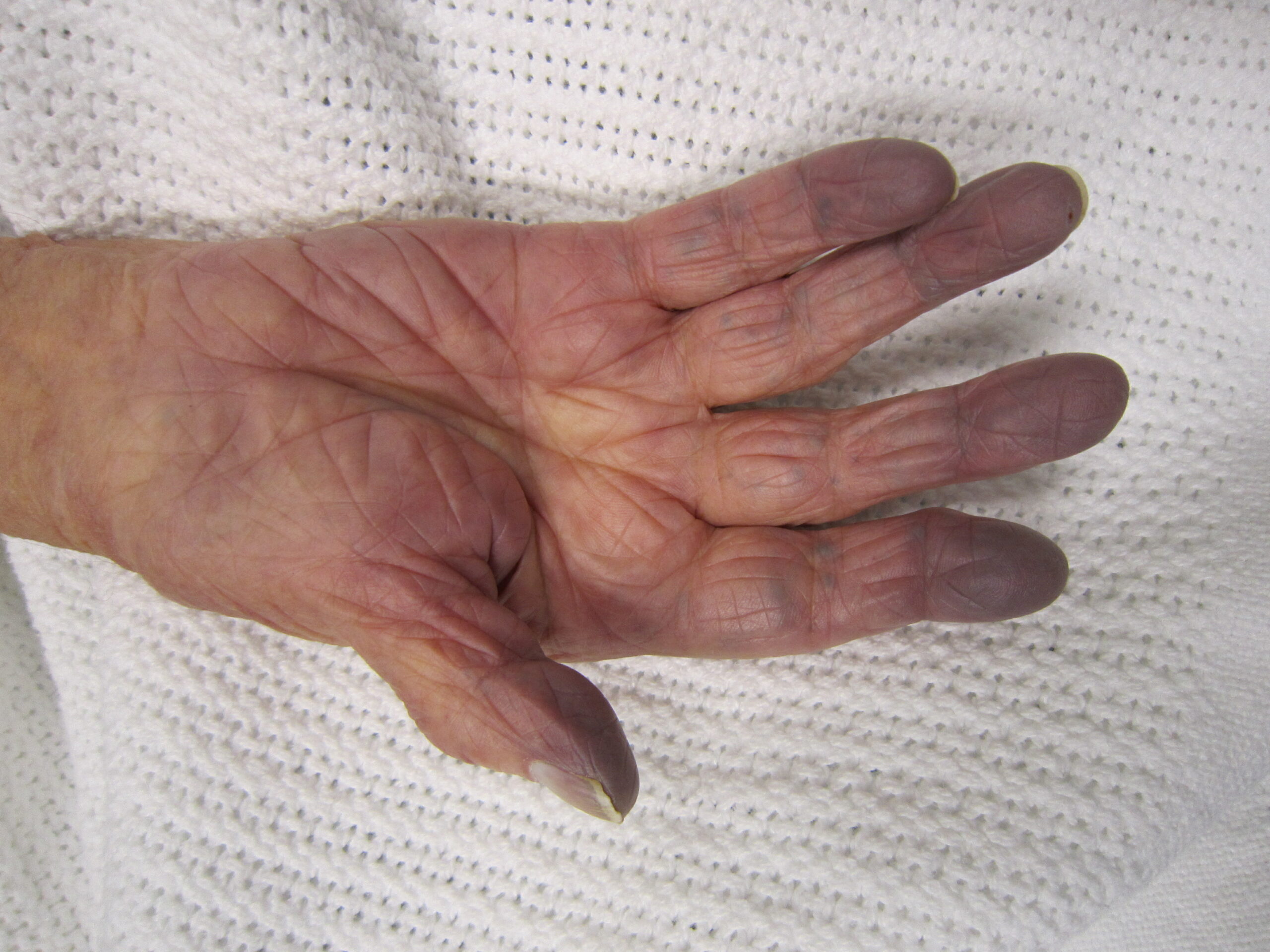Eisenmenger Complex: Symptoms, Causes & Treatment
What are the symptoms of Eisenmenger complex?
Eisenmenger complex is a condition that develops as a complication of certain congenital heart defects that affect the structure of the heart and the blood vessels around it. The condition leads to changes in the blood vessels in the lungs, which can result in a reversal of blood flow and a decrease in oxygen levels in the blood. Symptoms of Eisenmenger complex can include:
- Cyanosis: Bluish discoloration of the skin, lips, and nails due to low oxygen levels in the blood.
- Shortness of Breath: Difficulty breathing, especially during physical activity or exertion.
- Fatigue: Feeling tired or lethargic, even after minimal exertion.
- Dizziness or Fainting: Due to reduced oxygen delivery to the brain.
- Clubbing: Abnormal enlargement of the fingertips and toes, which can occur over time in response to chronic low oxygen levels.
- Arrhythmias: Irregular heart rhythms, which can cause palpitations or a racing heartbeat.
- Chest Pain: Due to the strain on the heart and reduced oxygen supply to the heart muscle.
- Swelling: Swelling (edema) in the legs, ankles, or abdomen due to fluid retention.
- Reduced Exercise Tolerance: Difficulty performing physical activities or exercise due to reduced oxygen levels in the blood.
It’s important to note that the symptoms of Eisenmenger complex can vary in severity and may worsen over time. Individuals with Eisenmenger complex require specialized care from a cardiologist or healthcare team familiar with the condition to monitor their condition, manage symptoms, and reduce the risk of complications. Prompt diagnosis and appropriate management can help improve quality of life and reduce the risk of complications associated with Eisenmenger complex.
What are the causes of Eisenmenger complex?
Eisenmenger complex is a condition that develops as a complication of certain congenital heart defects that affect the structure of the heart and the blood vessels around it. The primary cause of Eisenmenger complex is the presence of a large hole between the two lower chambers of the heart (ventricular septal defect), a condition known as atrioventricular septal defect (AVSD) or other types of septal defects.
In individuals with congenital heart defects such as AVSD, the abnormal opening between the heart chambers allows blood to flow from the left side of the heart (which carries oxygen-rich blood) to the right side of the heart (which carries oxygen-poor blood). This causes an increased volume of blood to flow through the lungs, leading to high pressure in the lung arteries (pulmonary hypertension). Over time, the increased pressure in the lungs causes changes in the blood vessels, leading to pulmonary vascular disease.
As pulmonary vascular disease progresses, the blood vessels in the lungs become thickened and narrowed, which increases the resistance to blood flow. Eventually, the increased pressure in the lungs causes a reversal of blood flow, with oxygen-poor blood from the right side of the heart mixing with oxygen-rich blood from the left side of the heart. This results in cyanosis (bluish discoloration of the skin) and other symptoms characteristic of Eisenmenger complex.
While AVSD is the most common congenital heart defect associated with Eisenmenger complex, other types of heart defects that cause increased blood flow to the lungs can also lead to the development of the condition. These include ventricular septal defects (VSD), atrial septal defects (ASD), and patent ductus arteriosus (PDA).
It’s important to note that not all individuals with congenital heart defects will develop Eisenmenger complex. The risk of developing the condition depends on the size and location of the heart defect, as well as individual factors such as age, overall health, and the presence of other medical conditions. Early diagnosis and appropriate management of congenital heart defects can help reduce the risk of developing Eisenmenger complex.
What is the treatment for Eisenmenger complex?
The treatment for Eisenmenger complex focuses on managing symptoms, improving quality of life, and reducing the risk of complications associated with the condition. Treatment strategies may include:
- Medications: Medications may be prescribed to help manage symptoms and improve heart function. These may include medications to reduce fluid retention (diuretics), improve heart function (such as digoxin), and reduce the risk of blood clots (anticoagulants).
- Oxygen Therapy: Supplemental oxygen therapy may be prescribed to help increase oxygen levels in the blood and alleviate symptoms of cyanosis and shortness of breath.
- Surgical Repair: In some cases, surgical repair of the underlying congenital heart defect may be considered. However, this is usually only an option in individuals with certain types of defects and should be carefully evaluated by a cardiac surgeon.
- Lifestyle Modifications: Lifestyle changes such as avoiding strenuous physical activity, maintaining a healthy weight, and avoiding high altitudes can help reduce the risk of complications.
- Regular Monitoring: Regular follow-up visits with a cardiologist are important to monitor the progression of the condition, adjust medications as needed, and identify any new symptoms or complications.
- Pulmonary Hypertension Therapy: Pulmonary hypertension-specific medications, such as endothelin receptor antagonists, phosphodiesterase-5 inhibitors, and prostacyclin analogs, may be used to help reduce pulmonary artery pressure and improve symptoms.
- Treatment of Complications: Additional treatments may be needed to manage complications associated with Eisenmenger complex, such as arrhythmias, heart failure, or blood clots.
It’s important for individuals with Eisenmenger complex to receive care from a multidisciplinary team of healthcare professionals, including cardiologists, pulmonologists, and other specialists, to ensure comprehensive management of the condition. Regular monitoring and appropriate treatment can help improve quality of life and reduce the risk of complications associated with Eisenmenger complex.




